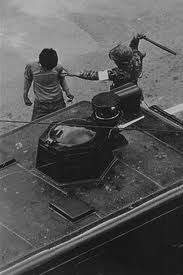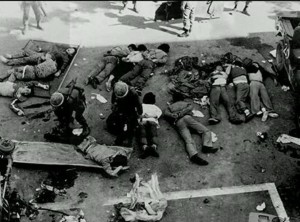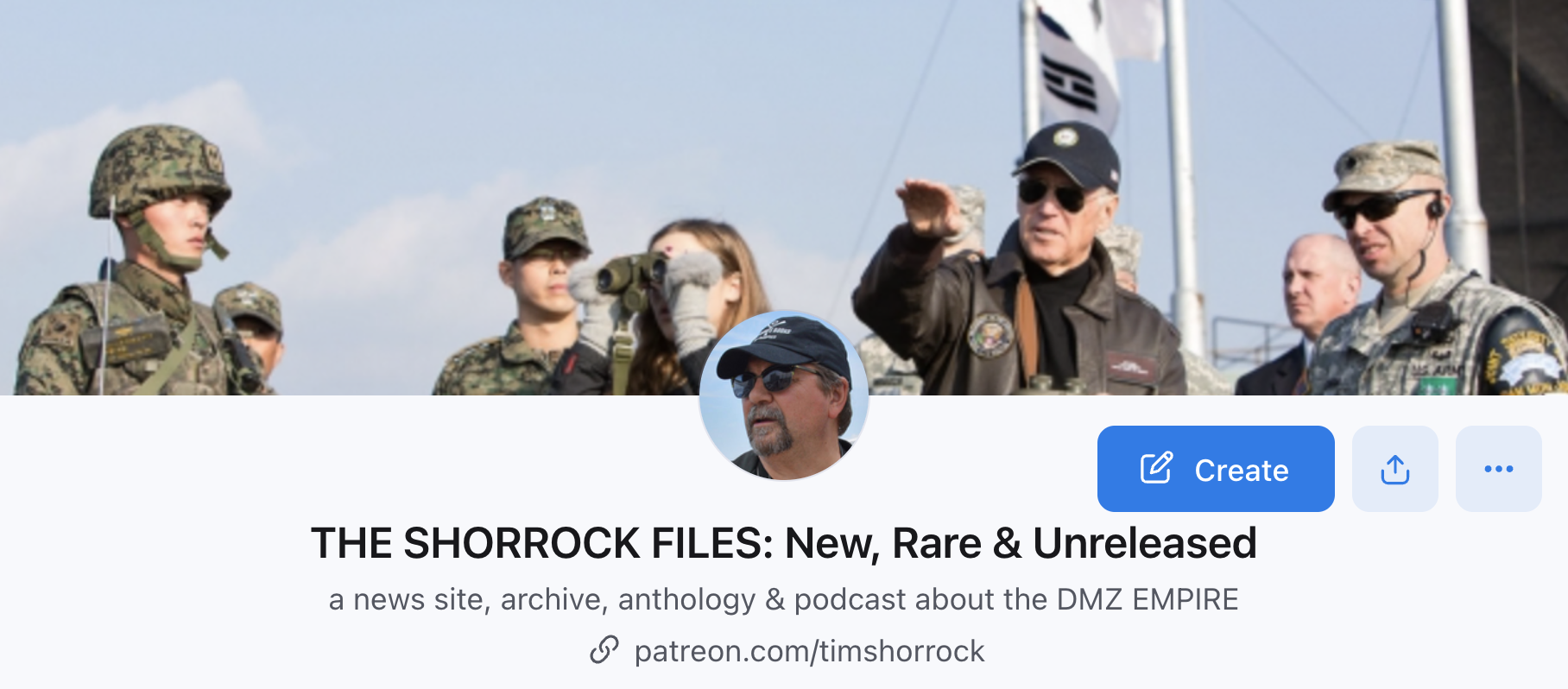 I got a surprise today. North Korea’s Korea Central News Agency (KCNA) cited my documents on the 1980 Kwangju Uprising in South Korea. The citation appeared in a story looking back at the event and exploring its significance in recent U.S.-Korean history.
I got a surprise today. North Korea’s Korea Central News Agency (KCNA) cited my documents on the 1980 Kwangju Uprising in South Korea. The citation appeared in a story looking back at the event and exploring its significance in recent U.S.-Korean history.
This is the first time in my memory that any media outlet in the DPRK has written about the thousands of declassified cables I obtained in the 1990s about U.S. role in the Kwangju rebellion and the May 1980 coup that brought to power the hated South Korean dictator, Chun Doo Hwan.

Some of what KCNA reported was fact. But KCNA’s propagandists – its writers cannot be called journalists by any stretch of the imagination – went way beyond what was in my documents to charge that the U.S. administration of President Jimmy Carter, through its ambassador in Seoul, essentially ordered Chun to “reinforce or replace…riot police with military troops.” That’s not quite what happened, as I’ll explain. But first, the gist of the KCNA story, which is entitled “U.S. Masterminds Suppression of Kwangju Popular Uprising in S. Korea.”
On May 18, 1980, students and other citizens in south Korea’s Kwangju City turned out in a massive uprising for independence, democracy and reunification.
The uprising, in protest against the pro-American military fascist rule, swept 17 cities and counties in South Jolla Province and Jonju City in North Jolla Province, involving more than one million people.
The uprisers drove out the martial forces from the city of Kwangju and defended the city from the attacks of crack contingent for ten days.
So far, so good. But here comes the twist:
However, the uprising suffered a failure by brutal crackdown of the military fascist clique, which was engineered by the United States, and the city turned into a “bath of blood”.
At that time, the U.S. handed over to the military fascist clique puppet army divisions and military hardware under the U.S. forces commander in south Korea to quell the uprising.
According to south Korea’s Yonhap Press in late February 1996, a predecessor of Yonhap News, the then commander of the U.S. forces in south Korea told in a meeting that he approved the move of the south Korean army’s 20th Division into Kwangju.
Here’s where my documents come in:
The U.S. newspaper Journal of Commerce dated February 27, 1996 said the U.S. ambassador to south Korea, in a confidential message sent to the State Department on May 7, 1980, unveiled his intention to reinforce or replace the riot police with military troops by instigating the south Korean military. On May 9, he informed the south Korean authorities of the approval he won from the U.S. administration.
Backed by the United States, the south Korean military fascist clique mercilessly massacred the uprisers, regardless of sex and ages, saying “it is no bad to kill even 70 percent of the Kwangju citizens.”
On no account, the U.S. can evade the blame for the Kwangju massacre.
Now I happen to agree with that last sentence; and while I don’t use the term myself, I don’t think the North Korean reference to the South Korean “fascist clique” is off the mark.

That’s essentially who seized control: a small group of ideologues within the Army (based in its Special Forces and led by Chun, a former Special Forces operator in Vietnam) who saw virtually any opposition to their rule as communist-inspired and, therefore, illegitimate – and acted brutally to protect the established order at the time.
But the rest of the KCNA dispatch turns my reporting, which appeared in the Journal of Commerce and the South Korean weekly Sisa Journal, into myth. My story made the following revelations:
Senior officials in the Carter administration, fearing that chaos in South Korea could unravel a vital military ally and possibly tempt North Korea to intervene, approved Mr. Chun’s plans to use military units against the huge student demonstrations that rocked Korean cities in the spring of 1980.
U.S. officials in Seoul and Washington knew Mr. Chun’s contingency plans included the deployment of Korean Special Warfare Command troops, trained to fight behind the lines in a war against North Korea. The ”Black Beret” Special Forces, who were not under U.S. command, were modeled after the U.S. Green Berets and had a history of brutality dating back to their participation alongside American troops in the Vietnam War.
On May 22, 1980, in the midst of the Kwangju Uprising, the Carter administration approved further use of force to retake the city and agreed to provide short-term support to Mr. Chun if he agreed to long-term political change. At a White House meeting on that date, plans were also discussed for direct U.S. military intervention if the situation got out of hand.
The documents show that the U.S. assurances to Mr. Chun were approved by Mr. Christopher and delivered May 9 by William J. Gleysteen, who was then U.S. ambassador to Seoul. ”In none of our discussions will we in any way suggest that the USG (U.S. government) opposes ROKG (Republic of Korea government) contingency plans to maintain law and order, if absolutely necessary, by reinforcing the police with the army,” Mr. Gleysteen cabled the State Department on May 7, 1980, as he prepared for a critical meeting on May 9 with Mr. Chun.
There’s the difference. KCNA (and North Korea) wants its international readers (you) to believe that the United States managed and directed (“masterminded’) the South Korean response to the uprising. But my documents revealed that the United States didn’t order (or “mastermind”) anything: instead, through its ambassador, it reassured General Chun that the United States would not oppose him if he decided to use military force against domestic forces.
That, in my estimation, was a collosal and utterly stupid mistake, because it gave Chun a free hand to take virtually whatever measures he needed to put down what were, by all accounts, massive but quite peaceful protests against the re-imposition of military rule after 18 straight years of dictatorship. But those weren’t orders.
However, it is true that, once the decision was made in the White House to provide “short term” support to suppress the rebellion, the Pentagon (as the more powerful half of a highly unusual joint command with the South Korean military) released one of its shared divisions (the 20th) normally stationed on the DMZ to be deployed to put down the citizens’ rebellion in Kwangju.
Still, the massacre in Kwangju was Chun’s decision. The night after his coup, he and his allied generals deployed his Special Forces into Kwangju to enforce martial law decrees against demonstrations – and then instructed those forces to assault them, with bayonets, M-16s, and billy clubs – when they resisted. Hundreds were slaughtered as a result. And in the 1990s, after democracy was restored, Chun and his cohorts were tried and convicted for murder (later to be pardoned by Kim Dae Jung, the left-wing dissident leader-turned president he hated so much).
So the United States backed Chun up, but didn’t give the orders. For that, we were complicit in what happened; but Chun bears full responsibility for the bl0odshed. North Korea got it wrong. Read my stories, and the cables themselves, and judge for yourself.
But I have to say add something here about the U.S. press. In citing my documents, KCNA has done something that the New York Times never did. My Journal of Commerce story broke the week Chun was being tried in Seoul in 1996, and was read widely – including by the Times’ Tokyo bureau, which had covered South Korea’s democratic struggle intensely for years. But the Times, I was told by a reporter in its bureau, never mentioned my documents because the revelations, it was told by U.S. diplomats, were “an old story.”
Someday I’m going to ask the Times’ Bureau Chief why. His name? Nicholas Kristof. You might remember him – he won the Pulitzer for his coverage of Tienanmen. But unlike Kwangju, that was a foreign story, with no U.S. footprint. He might be interested to know that Kwangju is now known throughout Asia as “Korea’s Tienanmen.”
